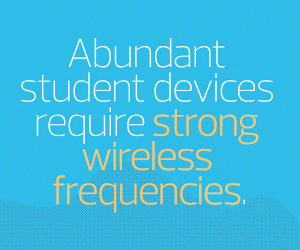How Texas K–12 Students are Working to Combat Understaffing
Berger is using robots, programmed by students in the district, to automate tasks such as cutting the grass and cleaning the floors in schools. In turn, the students are learning valuable STEM skills while school maintenance doesn’t go unchecked. Programming the robots gives students a better understanding of automation and other robotics.
Within the district, students are also helping with other technology-driven tasks, such as device repairs. Teaching students to repair devices gives time back to IT staff.
Students have an opportunity to take these skills into higher education and the workforce one day. At the same time, Berger is saving the district money when funds are tight and job openings are hard to fill without higher pay.
GET THE INFOGRAPHIC: Discover six creative ways to spend ESSER funds.
Creative Technology Applications Bring School Stakeholders Together
While robotics and automation are not widely used in K–12 schools for facilities maintenance, Berger is sharing his knowledge with other districts in his area and beyond.
He has the support of his own staff — network directors, security directors and others — who have bought into the creative applications of technology and student learning. He is also bringing educators and IT staff together through these programs, breaking down silos between departments.
Because Berger’s ideas (for robotic automation and device repairs in particular) are helping the school’s bottom line, he generally doesn’t encounter pushback from administrators. When needed, Berger and Grapevine-Colleyville ISD use the services offered by CDW’s education strategists, especially for projects such as network upgrades that can’t be completed by students.
This article is part of the ConnectIT: Bridging the Gap Between Education and Technology series. Please join the discussion on Twitter by using the #ConnectIT hashtag.







![[title]Connect IT: Bridging the Gap Between Education and Technology](http://www.edtechmagazine.com/k12/sites/default/files/articles/2014/05/connectit.jpg)




